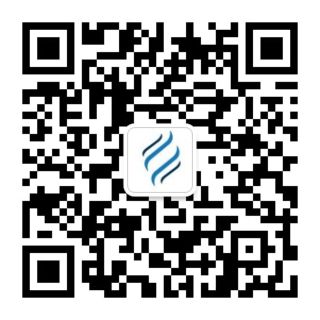Human HER1 Protein, His Tag, Avi Tag
-
产品编号
KMP2271
-
别名
表皮生长因子受体, Epidermal growth factor receptor, EGFR
-
规格
- 50ug
- 100ug
- 200ug
| Alias | 表皮生长因子受体, Epidermal growth factor receptor, EGFR |
| Catalog Number | KMP2271 |
| Product Description | The Human HER1 Protein(KMP2271) is produced in HEK293 Cells and the target gene encoding Leu25-Ser378 is expressed with a 6His, Avi tag at the C-terminus. |
| Molecular Name | HER1 |
| Species | Human |
| Host | HEK293 Cells |
| Size | 50ug, 100ug, 200ug |
| Purity | >95% as determined by SDS-PAGE |
| Purification | Affinity purification |
| Endotoxin | <1.0 EU/ug determined by the LAL method |
| Formulation | PBS, pH7.4 |
| Background | The EGFR subfamily of receptor tyrosine kinases is composed of EGFR, ErbB2, ErbB3 and ErbB4. The EGFR shares 43% - 44% aa sequence identity with the ECD of human EGFR subfamily. All these family members are type I transmembrane glycoproteins with an extracellular ligand binding domain. The extracellular ligand binding domain is containing two cysteine-rich domains separated by a spacer region and a cytoplasmic domain containing a membrane-proximal tyrosine kinase domain. Ligand binding could induce EGFR homodimerization and heterodimerization with ErbB2, resulting in cell signaling, heterodimerization tyrosine phosphorylation and kinase activation. It can bind EGF, amphiregulin, TGF-alpha, betacellulin, epiregulin, HB-EGF, epigen, and so on. Its signaling regulates multiple biological functions including cell proliferation, differentiation, motility, and apoptosis. EGFR can also be recruited to form heterodimers with the ligand-activated ErbB3 or ErbB4. EGFR is overexpressed in different tumors. Several anti-cancer drugs use EGFR as target. |
| Predicted Molecular Weight | 39.6 kDa |
| Storage Condition | Aliquot and store at -20℃ to -80℃. Avoid repeated freezing and thawing cycles. |
| Shipping Condition | In general, the proteins are provided as lyophilized powder which are shipped at ambient temperature. They are shipped out in dry ice if supplied in liquid form. |
| Uniprot ID | P00533 |
| References | 1.Mol. Cell. Biol. 20:3817-3830 (2000) 2.J. Biol. Chem. 276:8865-8874 (2001) 3.J. Biol. Chem. 276:35239-35242 (2001) 4.J. Biol. Chem. 276:48532-48538 (2001) 5.Mol. Cell 11:507-517 (2003) 6.Nat. Med. 17:589-595 (2011) 7.Cancer Res. 64:6652-6659 (2004) 8.Nature 450:741-744 (2007) 9.EMBO J. 23:3270-3281 (2004) 10.Glycobiology 25:855-868 (2015) |
| Function | Receptor tyrosine kinase binding ligands of the EGF family and activating several signaling cascades to convert extracellular cues into appropriate cellular responses (PubMed:2790960, PubMed:10805725, PubMed:27153536). Known ligands include EGF, TGFA/TGF-alpha, AREG, epigen/EPGN, BTC/betacellulin, epiregulin/EREG and HBEGF/heparin-binding EGF (PubMed:2790960, PubMed:7679104, PubMed:8144591, PubMed:9419975, PubMed:15611079, PubMed:12297049, PubMed:27153536, PubMed:20837704, PubMed:17909029). Ligand binding triggers receptor homo- and/or heterodimerization and autophosphorylation on key cytoplasmic residues. The phosphorylated receptor recruits adapter proteins like GRB2 which in turn activates complex downstream signaling cascades. Activates at least 4 major downstream signaling cascades including the RAS-RAF-MEK-ERK, PI3 kinase-AKT, PLCgamma-PKC and STATs modules (PubMed:27153536). May also activate the NF-kappa-B signaling cascade (PubMed:11116146). Also directly phosphorylates other proteins like RGS16, activating its GTPase activity and probably coupling the EGF receptor signaling to the G protein-coupled receptor signaling (PubMed:11602604). Also phosphorylates MUC1 and increases its interaction with SRC and CTNNB1/beta-catenin (PubMed:11483589). Positively regulates cell migration via interaction with CCDC88A/GIV which retains EGFR at the cell membrane following ligand stimulation, promoting EGFR signaling which triggers cell migration (PubMed:20462955). Plays a role in enhancing learning and memory performance (By similarity). Plays a role in mammalian pain signaling (long-lasting hypersensitivity) (By similarity). Isoform 2 may act as an antagonist of EGF action. (Microbial infection) Acts as a receptor for hepatitis C virus (HCV) in hepatocytes and facilitates its cell entry. Mediates HCV entry by promoting the formation of the CD81-CLDN1 receptor complexes that are essential for HCV entry and by enhancing membrane fusion of cells expressing HCV envelope glycoproteins. ATP + L-tyrosyl-[protein] = ADP + H+ + O-phospho-L-tyrosyl-[protein] Endocytosis and inhibition of the activated EGFR by phosphatases like PTPRJ and PTPRK constitute immediate regulatory mechanisms. Upon EGF-binding phosphorylates EPS15 that regulates EGFR endocytosis and activity. Moreover, inducible feedback inhibitors including LRIG1, SOCS4, SOCS5 and ERRFI1 constitute alternative regulatory mechanisms for the EGFR signaling. Up-regulated by NEU3-mediated desialylation of N-linked glycan at Asn-528. |





 0
0
